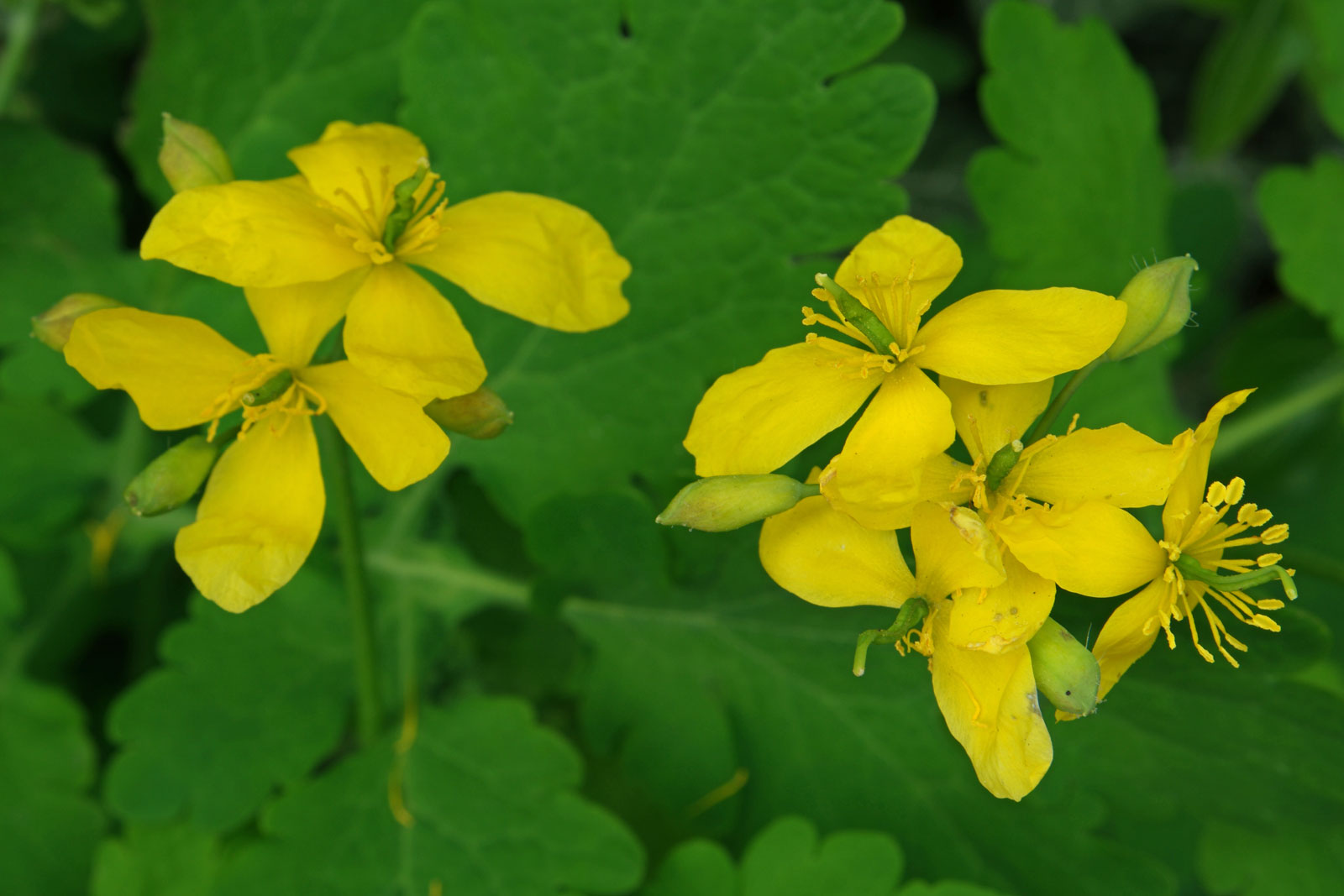Common Names:
This plant is commonly known as:
-
Tetterwort
-
Garden Celandine
-
Greater Celandine
-
Chelidonium
Medicinal Parts Used:
The useful parts of the plant include:
-
The herb (above-ground parts)
-
The root and rhizome
The herb is collected during the flowering season and dried quickly. The roots are harvested from August to October and also dried. In some treatments, the fresh root or rhizome is used too.
Plant Description:
Greater Celandine is a fast-growing plant that reaches about 2 feet tall.
Flowers:
It blooms in spring, producing bright yellow flowers in clusters at the top of the plant.
Fruits/Seeds:
The plant produces long, slender fruit pods which, when ripe, burst open and spread seeds over a wide area.
Ecological Preference:
It prefers:
-
Sunny, moist, and nutrient-rich soils
-
Places like vacant lots, open parks, rubble dumps, and wetlands
Chemical Composition:
Greater Celandine contains many active chemicals, especially alkaloids, which give it its medicinal effects:
Main Alkaloids:
-
Chelidonine (primary active alkaloid)
-
Berberine
-
Chelerythrine
-
Protopine
-
Coptisine
-
Sanguinarine
-
Allocryptopine
-
Magnoflorine
-
Sparteine
Other Compounds:
-
Carotene (Vitamin A)
-
Vitamin C
-
Chelidonic acid
-
Saponins
-
Histamine
-
Tyramine
-
Choline
Its characteristic yellow latex (sap) contains enzymes and a special protein called chelidostatin, which helps in removing skin growths like warts and moles.
Medicinal Uses and Actions:
Greater Celandine is well-known for being a liver remedy. The plant is used to:
-
Stimulate bile flow in the liver and gallbladder
-
Treat gallstones and gallbladder pain
-
Work as a mild sedative, helpful for asthma, bronchitis, and coughs
-
Remove warts, papillomas, and skin malformations through its latex
-
Serve as a detoxifying agent (used since ancient Roman times)
Unique Symptom:
One famous symptom that points to Chelidonium is a fixed, constant pain under the lower right shoulder blade — a classic sign of liver or gallbladder trouble.
Pharmacology:
At moderate doses, the plant is toxic, but when used carefully in medicine, it offers many benefits.
Key Therapeutic Effects:
-
Analgesic (pain-relieving) — from chelidonine and sanguinarine
-
Antibacterial — fights bacteria due to protopine and chelerythrine
-
Anti-inflammatory
-
Antispasmodic — calms spasms in bile ducts and bronchial tubes
-
Antitumor
-
Cholagogue — promotes bile flow, preventing gallstone formation
-
Hepatoprotective — protects the liver, improves bile quality
-
Immune-boosting
-
Central nervous system sedative (mild)
-
Reduces blood pressure
-
Lipotropic — helps remove fat from the liver
-
Inhibits anaphylactic shock
Historical and Folk Use:
-
Gypsies used it as a foot soak to refresh tired feet.
-
Russian and European folk healers have long used it for treating warts, moles, and skin issues.
-
Ancient healers like Pliny the Elder and Dioscorides considered it a powerful herb for detoxifying the body.
-
Fresh plant sap (latex) is still used in traditional medicine to treat warts.
Clinical Indications (Diseases Treated):
Chelidonium is prescribed in herbal and homeopathic medicine for:
-
Liver diseases (Hepatitis, Jaundice)
-
Gallbladder disorders (Cholelithiasis, Cholecystitis)
-
Bronchitis and Whooping cough
-
Asthma
-
Migraines and headaches (especially those starting from the right shoulder blade up to the right side of the head)
-
Warts and skin growths
-
Endometriosis
-
Hydrocele (fluid build-up in scrotum)
-
Toothache (chewing the root)
-
Cataracts (using the fresh juice directly in the eye in folk medicine)
Special Note:
The fresh herb is more effective than the dried one. Its antispasmodic and sedative effects reduce over time when stored.
Also — like many powerful herbs — overdosing can be dangerous due to its alkaloid content.
Speech Disorder
A speech disorder, also known as a speech impairment...
ADHD
Attention-deficit / hyperactivity disorder (ADHD) is a...
Cerebral Palsy(CP)
Cerebral palsy (CP) is a group of neurological disorders...
Cancer
Cancer is a broad term for diseases where cells...




